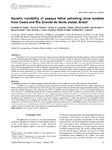Use este identificador para citar ou linkar para este item:
http://www.alice.cnptia.embrapa.br/alice/handle/doc/931832Registro completo de metadados
| Campo DC | Valor | Idioma |
|---|---|---|
| dc.contributor.author | DALTRO, C. B. | pt_BR |
| dc.contributor.author | PEREIRA, Á. J. | pt_BR |
| dc.contributor.author | ALFENAS-ZERBINI, P. | pt_BR |
| dc.contributor.author | BEZERRA-JUNIOR, J. E. A. | pt_BR |
| dc.contributor.author | LIMA, J. A. de A. | pt_BR |
| dc.contributor.author | ZERBINI, F. M. | pt_BR |
| dc.contributor.author | ANDRADE, E. C. de | pt_BR |
| dc.contributor.author | CASCARDO, R. de S. | pt_BR |
| dc.date.accessioned | 2012-08-21T11:11:11Z | pt_BR |
| dc.date.available | 2012-08-21T11:11:11Z | pt_BR |
| dc.date.created | 2012-08-21 | pt_BR |
| dc.date.issued | 2012 | pt_BR |
| dc.identifier.citation | Tropical Plant Pathology, v. 37, n. 1, p. 37-43, 2012. | pt_BR |
| dc.identifier.uri | http://www.alice.cnptia.embrapa.br/alice/handle/doc/931832 | pt_BR |
| dc.description | The papaya (Carica papaya) is a fruit crop of great economic importance throughout the Brazilian northeast, which is responsible for 60% of the national output. Papayas in the states of Ceará and Rio Grande do Norte are affected by lethal yellowing disease, caused by papaya lethal yellowing virus (PLYV). Previous work suggested that PLYV is a putative sobemovirus. To assess the genetic variability of PLYV, foliar samples were collected in October 2008 and October 2009 in commercial fields from Ceará and Rio Grande do Norte states, and total RNA was extracted. Specific primers based on the sequence of a previously characterized PLYV isolate were used for the RT-PCR-based amplification of a 900 bp fragment corresponding to the central region of the viral genome. Fragments from 21 viral isolates were cloned and sequenced. Sequence analyses indicated >97% nucleotide sequence identity among the isolates, 94-100% identity with the previously sequenced PLYV isolate, and a lower but significant identity with sobemoviruses (43-48.5%). These results suggest a low genetic variability among PLYV isolates, and are in agreement with the provisional placement of PLYV in the genus Sobemovirus. Definitive taxonomic conclusions, however, can only be drawn after the determination of the full-length genomic sequence. | pt_BR |
| dc.language.iso | eng | eng |
| dc.rights | openAccess | eng |
| dc.subject | Papaya | pt_BR |
| dc.subject | PLYV | pt_BR |
| dc.title | Genetic variability of papaya lethal yellowing virus isolates from Ceará and Rio Grande do Norte states, Brazil. | pt_BR |
| dc.type | Artigo de periódico | pt_BR |
| dc.date.updated | 2012-10-23T11:11:11Z | pt_BR |
| dc.subject.thesagro | Carica Papaya | pt_BR |
| dc.subject.nalthesaurus | Sobemovirus | pt_BR |
| riaa.ainfo.id | 931832 | pt_BR |
| riaa.ainfo.lastupdate | 2012-10-23 | pt_BR |
| dc.contributor.institution | CLEIDIANE BORGES DALTRO, UFRB; ÁLVARO JÚLIO PEREIRA, UFV; POLIANE ALFENAS-ZERBINI, UFV; JOSÉ EVANDO AGUIAR BEZERRA-JUNIOR, UFC; JOSÉ ALBÉRSIO DE ARAÚJO LIMA, UFC; FRANCISCO MURILO ZERBINI, UFV; EDUARDO CHUMBINHO DE ANDRADE, CNPMF; RENAN DE SOUZA CASCARDO, UFRJ. | pt_BR |
| Aparece nas coleções: | Artigo em periódico indexado (CNPMF)  | |
Arquivos associados a este item:
| Arquivo | Descrição | Tamanho | Formato | |
|---|---|---|---|---|
| GeneticvariabilityofPapayalethalyellowingvirusisolatesfromCearaandRioGrandedoNortestatesBrazil..pdf | 909.83 kB | Adobe PDF |  Visualizar/Abrir |









